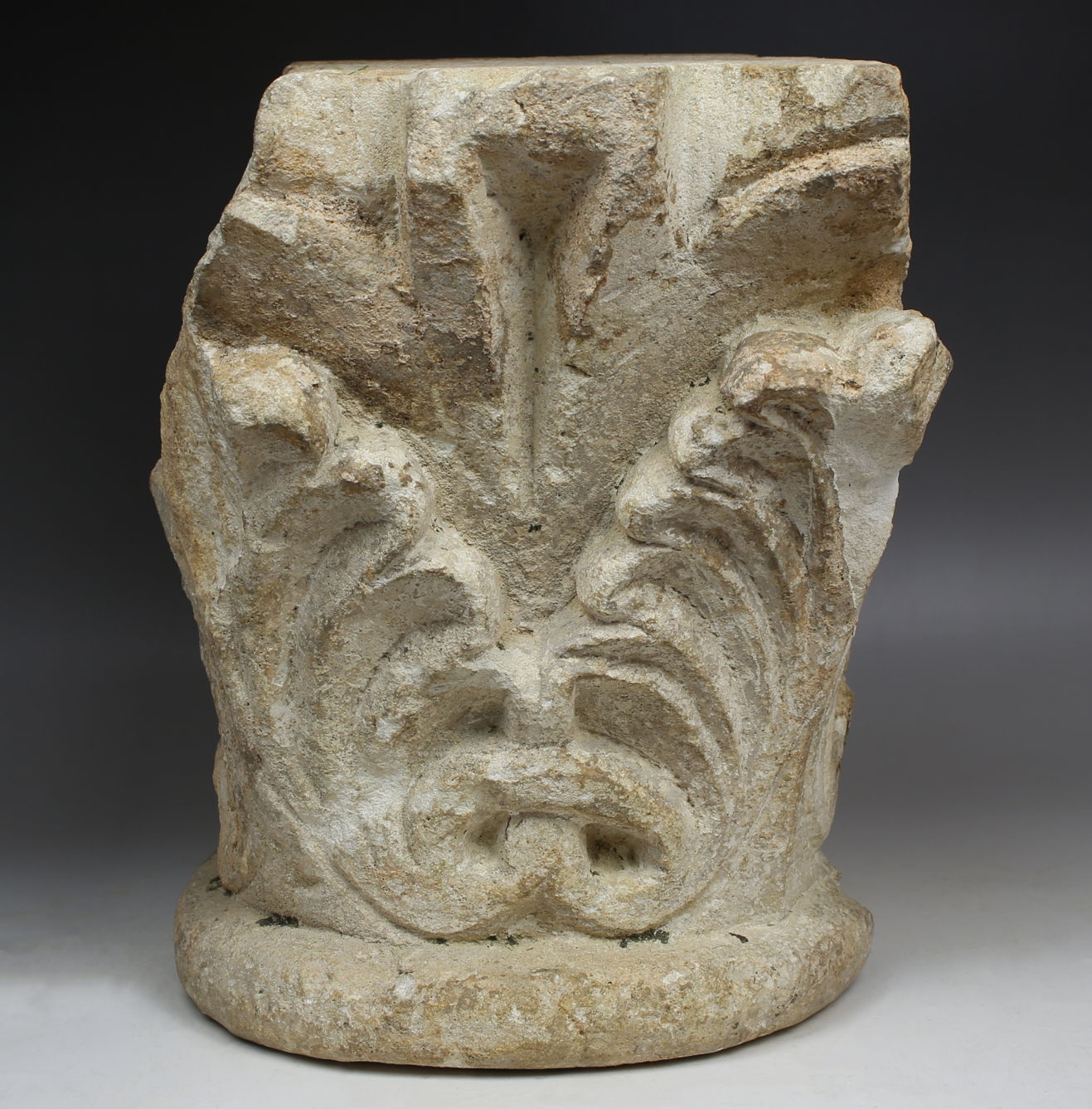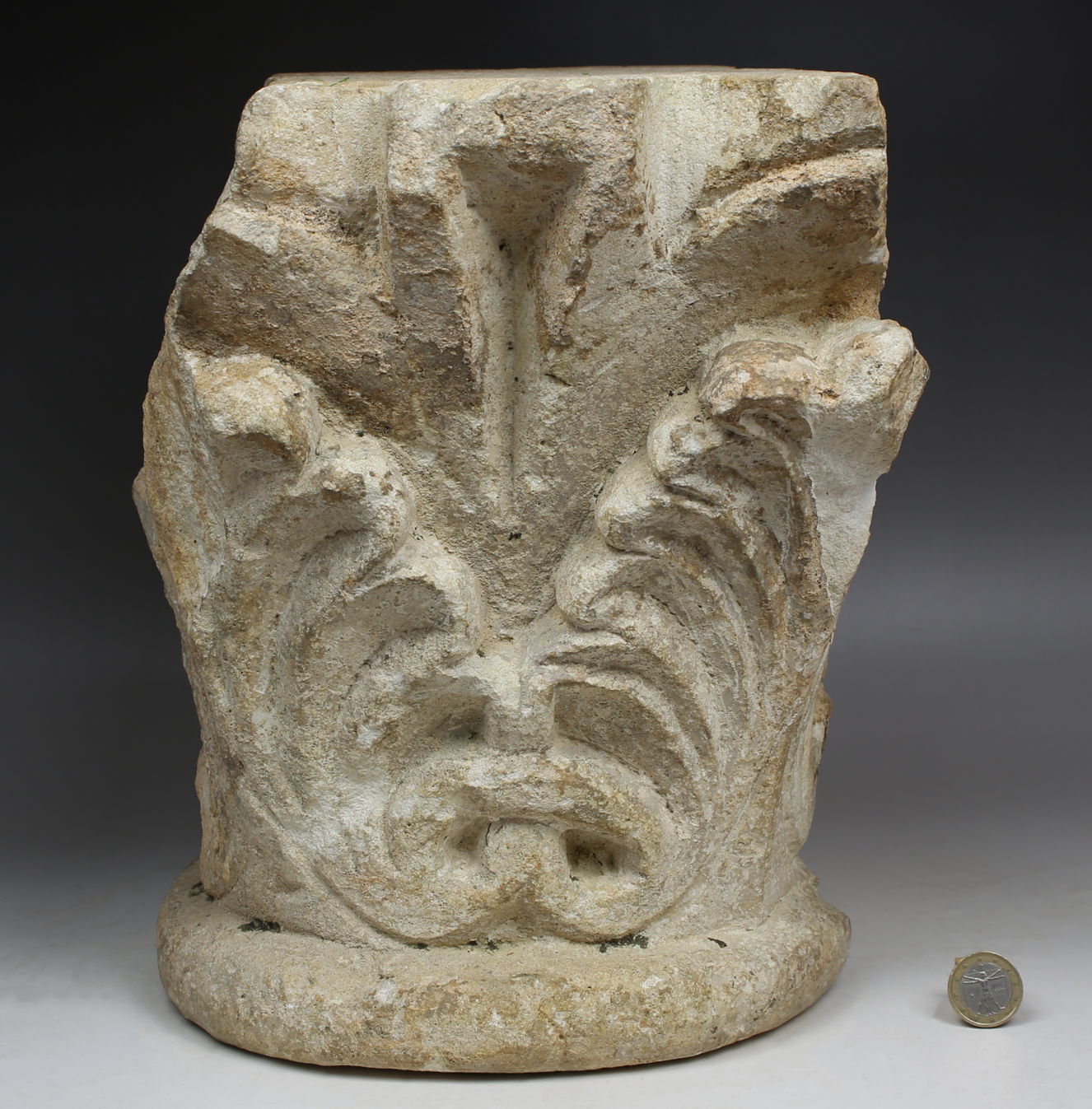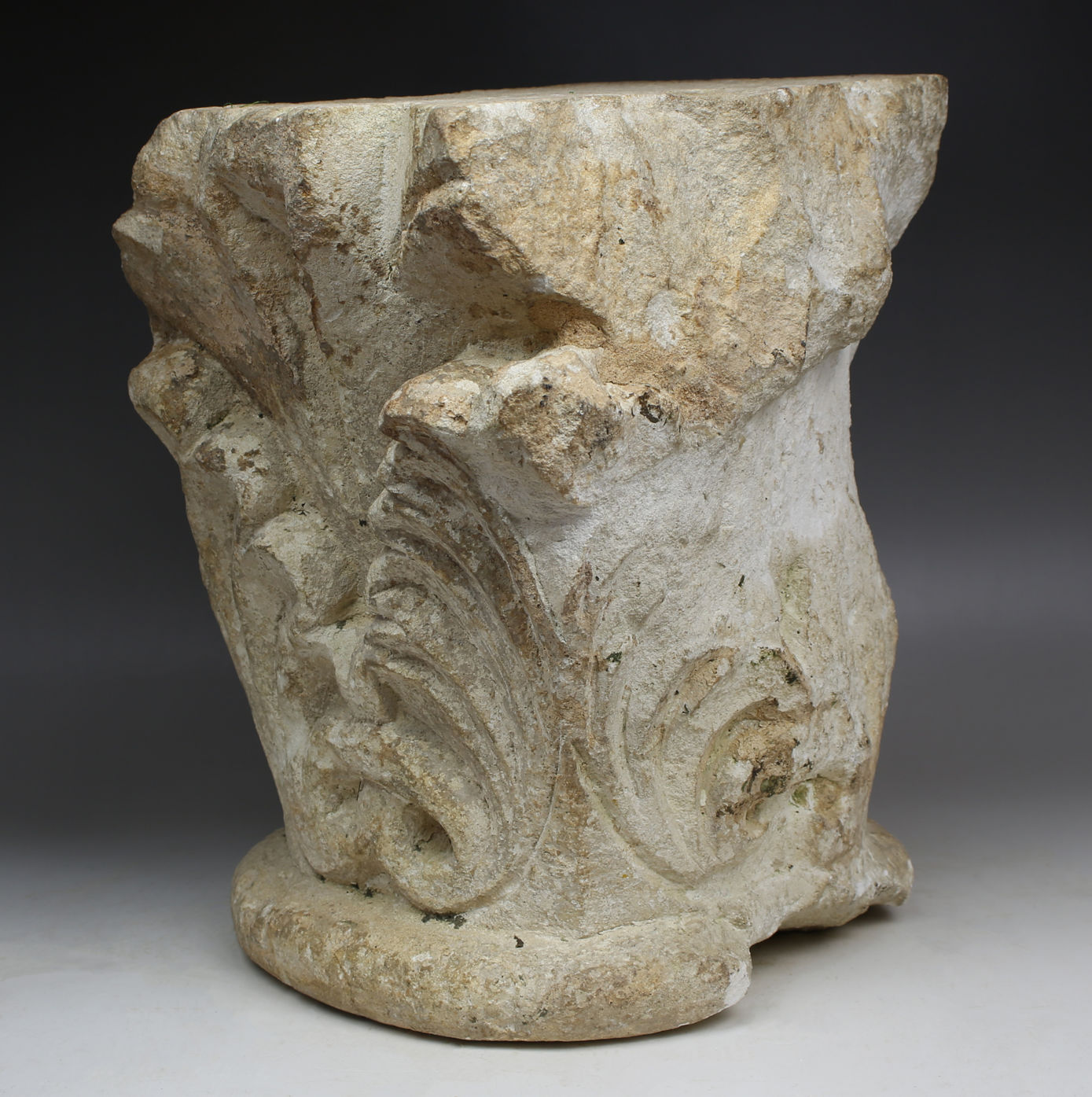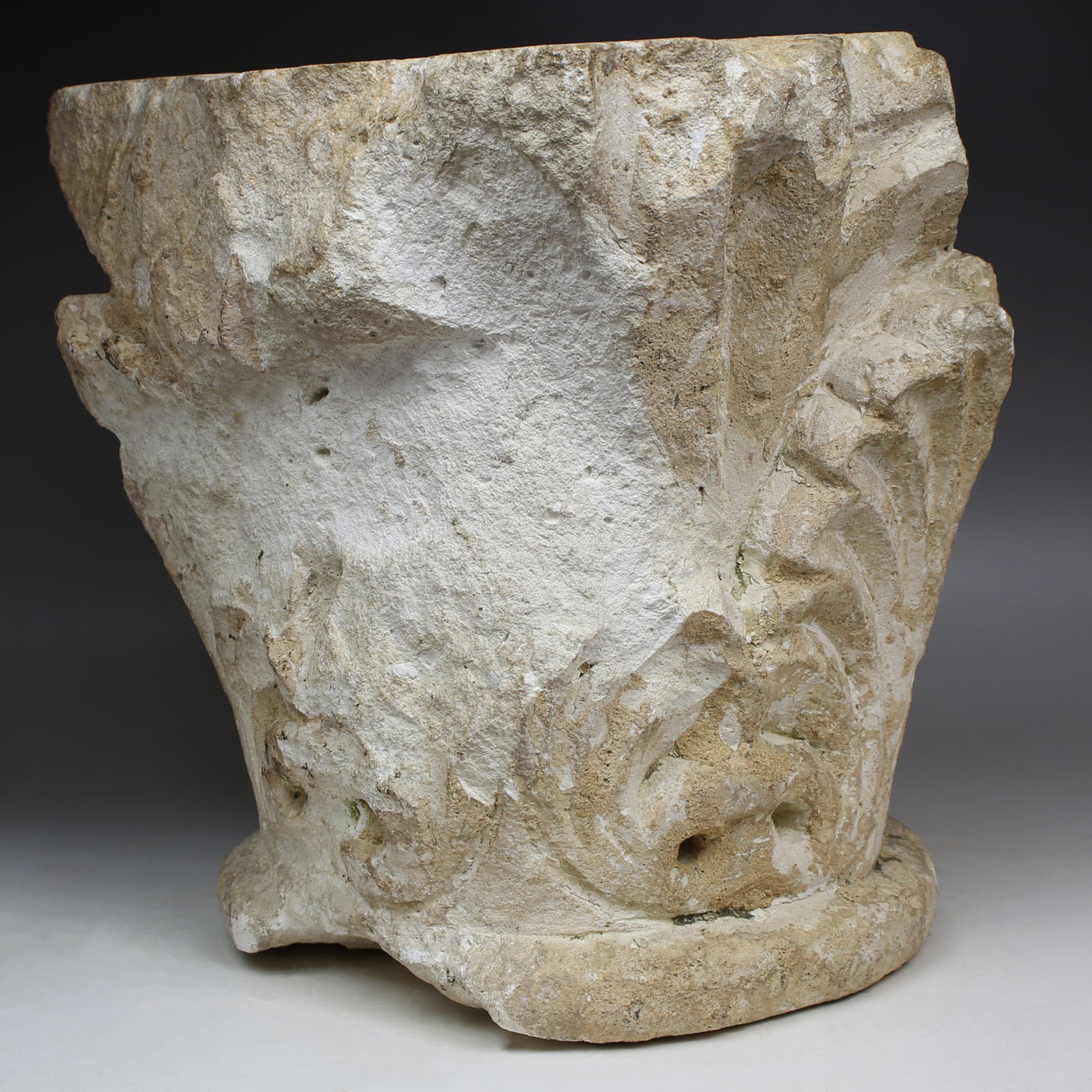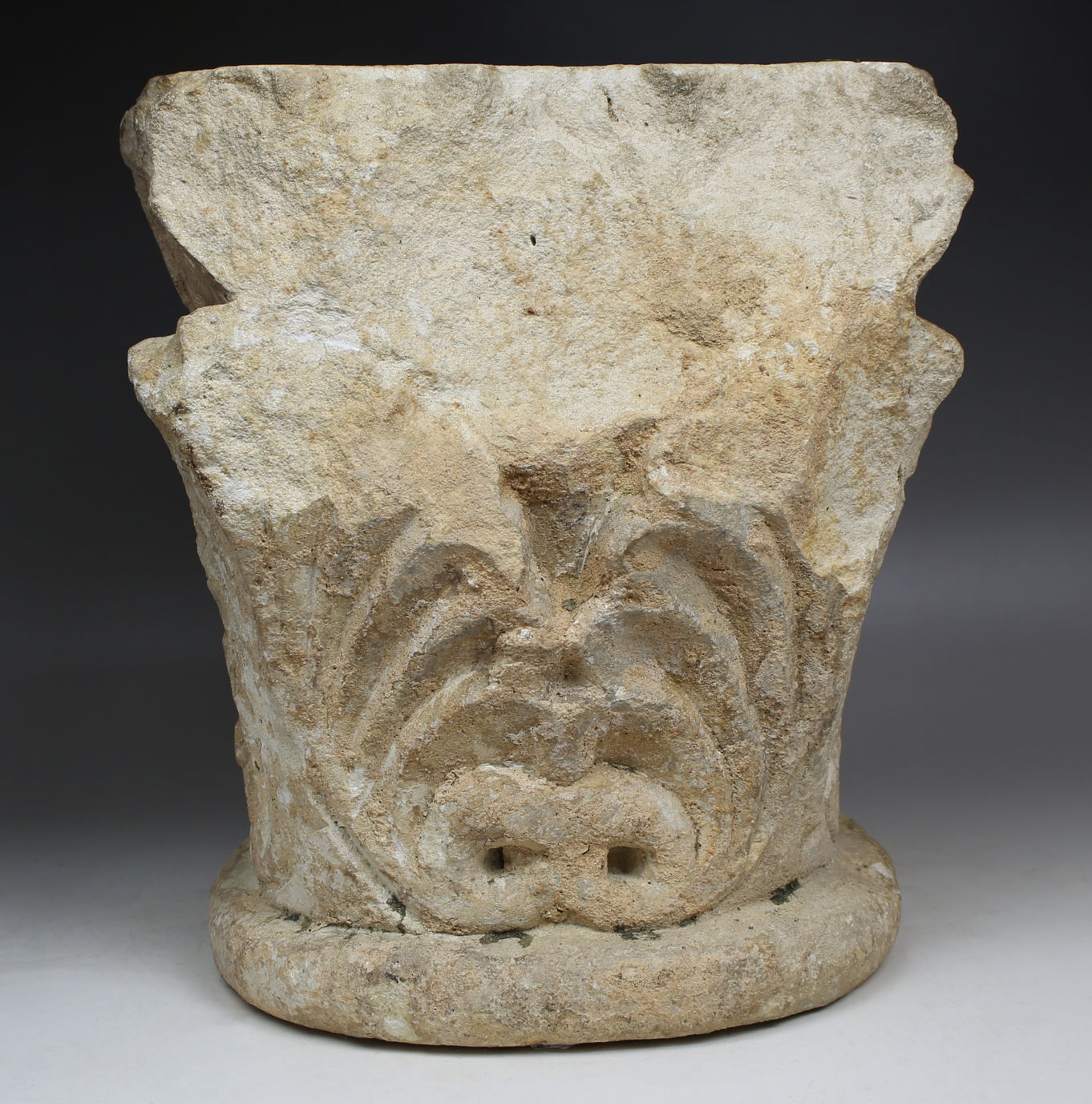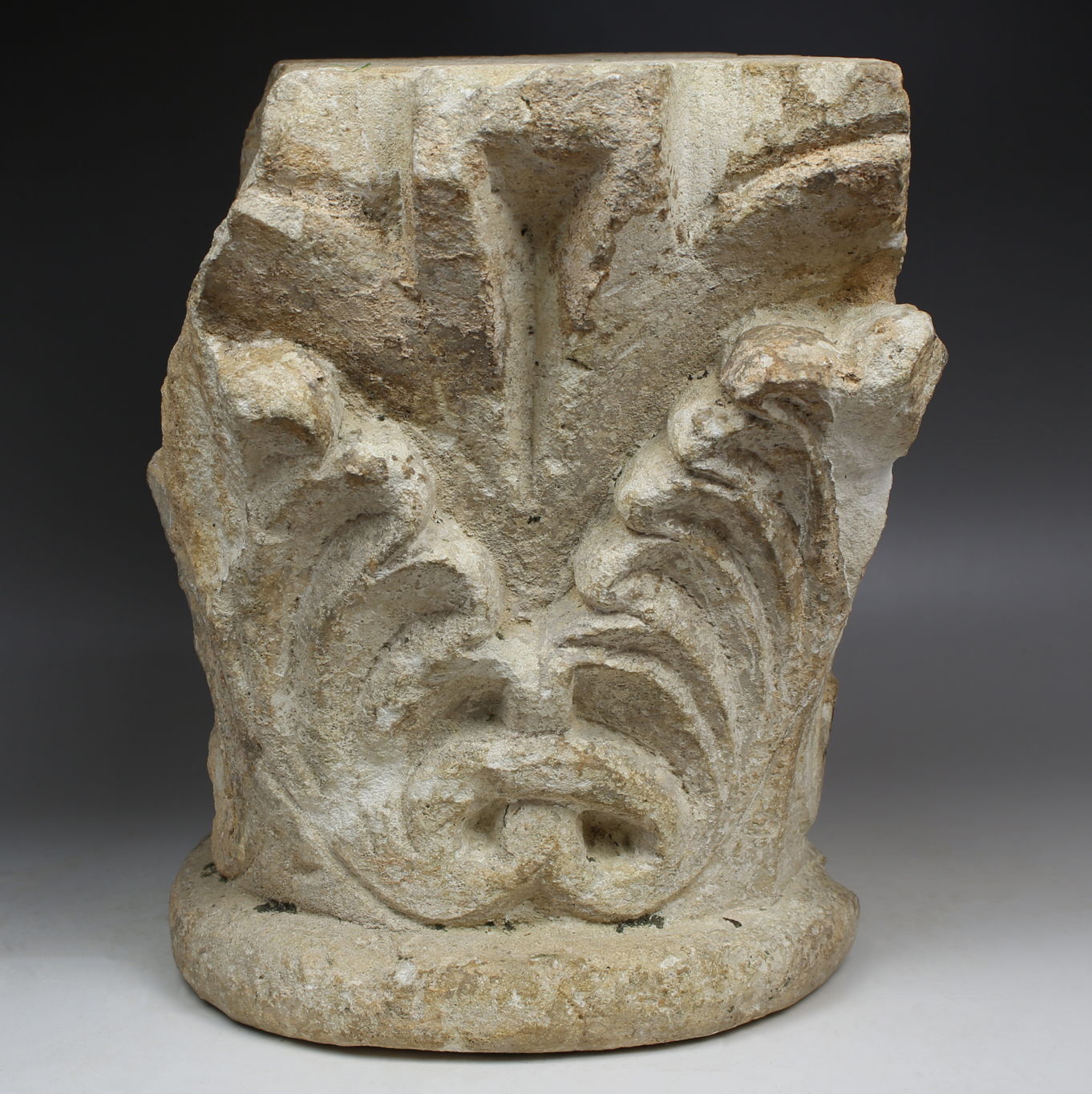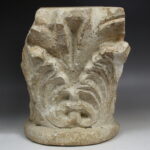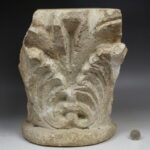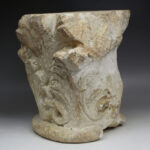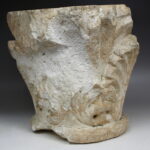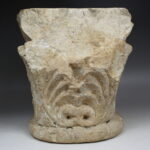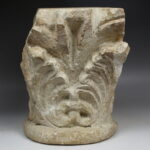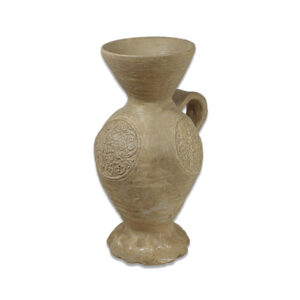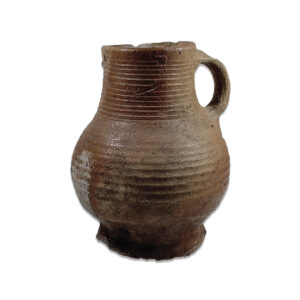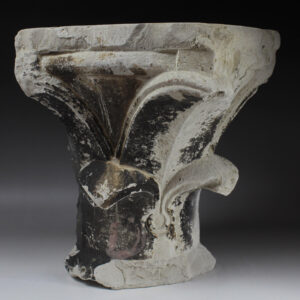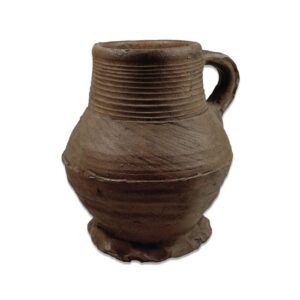Description
| ITEM | Capital |
| MATERIAL | Limestone |
| CULTURE | Medieval, Romanesque |
| PERIOD | 10th – 12th Century A.D |
| DIMENSIONS | 295 mm x 272 mm x 200 mm |
| CONDITION | Good condition |
| PROVENANCE | Ex French private collection, acquired in 1970s |
The Romanesque capital is a distinctive architectural element from the Romanesque period, which spanned roughly from the 10th to the 12th centuries in Europe. This capital, located at the top of a column or pilaster, played a crucial role in supporting the structure of buildings such as churches and monasteries. Romanesque capitals are notable for their robust and solid forms, which reflect the period’s emphasis on stability and strength in architecture. Unlike the more delicate and intricate capitals of the Gothic period that followed, Romanesque capitals were designed to carry the weight of the heavy stone ceilings and vaults characteristic of Romanesque buildings.
The decoration of Romanesque capitals often included a variety of motifs, ranging from geometric patterns to intricate relief carvings. Common themes included biblical scenes, mythological figures, and symbolic representations of animals and plants. These decorative elements served both functional and didactic purposes: they were meant to visually support the architectural structure while also conveying religious and moral messages to the predominantly illiterate populace of the time. The use of such iconography not only enhanced the aesthetic appeal of the capitals but also reinforced the didactic function of church architecture, serving as a visual tool for teaching religious stories and doctrines.
Romanesque capitals are also significant for their role in the development of medieval art and architecture. The style represents a transitional phase between the classical architecture of ancient Rome and the more elaborate Gothic structures that would emerge in the later Middle Ages. The solid, often massive appearance of Romanesque capitals reflects the broader architectural trends of the period, characterized by thick walls, small windows, and a general sense of fortification.


